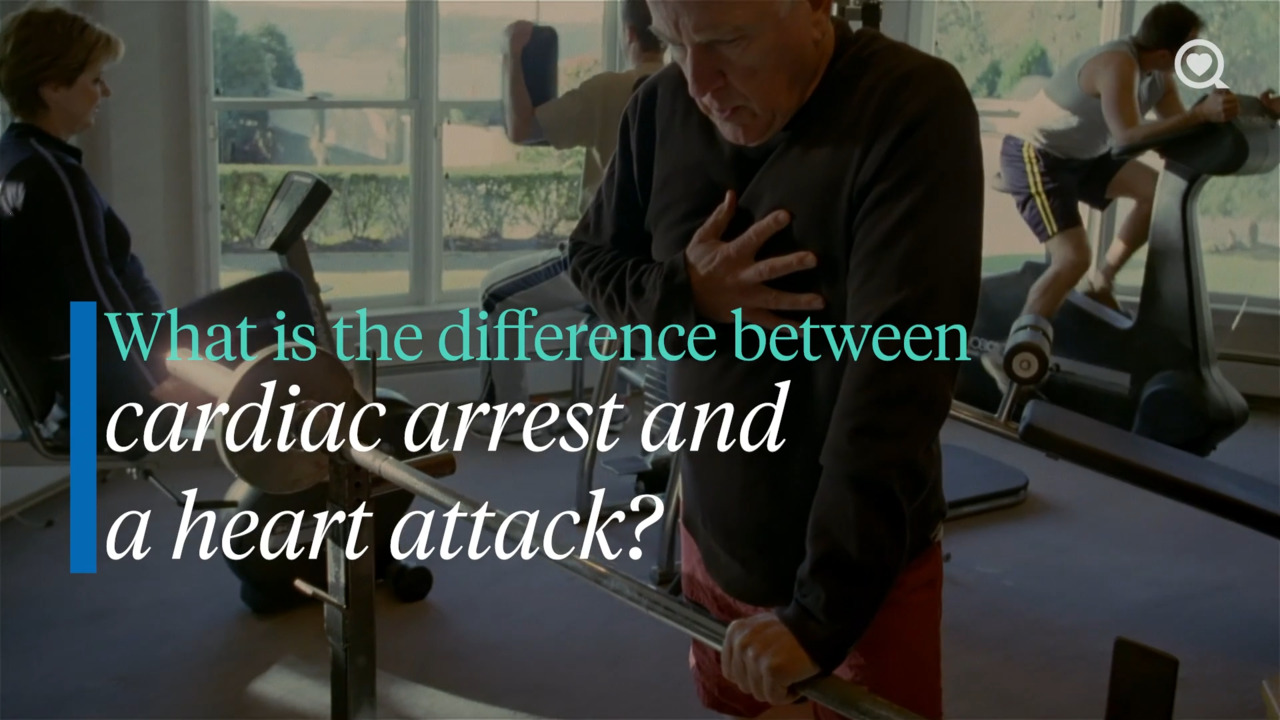Updated on June 7, 2024.
Each year, more than 805,000 people have a heart attack in the United States. That’s one heart attack every 40 seconds.
A heart attack—also called a myocardial infarction—occurs when blood flow to the heart muscle is disrupted. The longer the heart goes without adequate blood flow, the more damage to the heart can occur. Coronary artery disease (the most common form of heart disease) is the main cause of many heart attacks.
Though heart attack is serious, there are things you can do to promote a healthy heart, lower your risk of coronary artery disease, and help prevent a heart attack. The first step is to learn about the risk factors that make certain people more likely to have a heart attack.
Understanding heart attack risk factors
Risk factors for having a heart attack include the following:
- Smoking and using other forms of tobacco
- Eating an unhealthy diet
- Drinking too much alcohol
- Having obesity or overweight
- Being physically inactive or not getting regular exercise
- Having high blood pressure (hypertension)
- Having high levels of low-density lipoprotein, also known as LDL or “bad” cholesterol (a fat-like substance in the blood)
- Having type 1 or type 2 diabetes
- Being an older adult
- Having a family history of heart disease
Age and family history are two risk factors you can’t control. But others—like smoking, obesity, high blood pressure, inactivity, and diet—can be changed.
When it comes to diet, eating lots of foods that are high in salt, saturated fat, and added sugar can be particularly unhealthy for your heart. Saturated fat is a kind of fat that comes primarily from animal foods like meat and cheese. It is typically solid at room temperature. It’s particularly bad for your heart because it increases LDL cholesterol levels. LDL can accumulate in your blood vessels and cut off blood flow to your heart. Processed foods—like cookies, chips, and candy bars—tend to contain high levels of saturated fat, salt, and sugar.
“It’s hard to say a percentage, but I would say about half of all heart attacks are preventable as long as risk factors are identified,” says Vivek Sailam, MD, a cardiologist with Virtua Health in Sewell, New Jersey.
The good news is that heart attacks are on the decline in the U.S., thanks to factors like fewer people smoking and an increased use of cholesterol-lowering medications like statins. But while heart attack rates are declining overall, it is a growing health concern among younger adults.
H2: Heart attacks are occurring at younger ages
A 2019 study published in the Journal of the American College of Cardiology compared “young” heart attack survivors between the ages of 41 and 50 to “very young” heart attack survivors ages 40 and under. Among the participants, 20 percent experienced a heart attack at or before age 40. And between 2007 and 2016, the proportion of very young people experiencing heart attacks increased 2 percent each year.
These findings are similar to Dr. Sailam's own observations. “Unfortunately, in the past 10 years or so I’ve been seeing a steady increase in patients younger than 50 who have significant risk factors: morbid [extreme] obesity, diabetes, high cholesterol, high blood pressure, and tobacco use,” he says.
Moreover, the study found that youth didn’t improve outcomes among very young heart attack survivors. The rate of adverse outcomes—including dying from a stroke, a second heart attack, or another reason—were the same for people younger than 40 and adults in their 40s.
Despite this evidence, though, many young adults believe heart disease is an issue that only affects older people. A 2023 survey commissioned by The Ohio State University Wexner Medical Center found that 47 percent of participants between the ages of 18 and 44 don’t think they’re at risk of heart disease.
Understanding socioeconomic links to heart attack risk
Research suggests that socioeconomic factors can also influence heart health. Rates of well-established heart attack risk factors like diabetes, obesity, and high blood pressure tend to be higher in people with low income levels. These differences could be related in part to difficulties in getting or paying for quality medical care.
Living in poverty can also contribute to chronic stress. Chronic stress, in turn, can contribute to inflammation, which may increase one’s risk of heart disease.
One 2020 study published in JAMA Cardiology found that low socioeconomic status was strongly associated with early coronary artery disease risk in around one quarter of adults between the ages of 35 and 65. In the study, low socioeconomic status was defined as having an income below 150 percent of the federal poverty level or an education level less than a high school diploma.
If it's hard to find or buy fresh fruits and vegetables where you live, it can also affect your health. (Eating fresh fruits and vegetables is an important part of lowering the risk of heart disease.)
People with lower incomes are also more likely to smoke or have more trouble quitting. One possible reason why: If you are not able to find or use programs to help you stop smoking, it may be harder for you to quit.
People who experience racism may also have an elevated risk of heart disease. Being confronted with racism on a daily basis can cause intense levels of stress. This stress is linked to high blood pressure, diabetes, heart disease, and stroke. Specifically, the stress that comes from racism can increase inflammation in the body, which raises blood pressure, harms blood vessels, and affects stress hormones in the body.
How to prevent a heart attack
While there’s no way to definitively prevent a heart attack, there are several steps you can take to reduce your risk for heart disease and related health issues, including high blood pressure and heart attacks.
The increase in heart attack risk factors in the U.S. is due, in part, to unhealthy lifestyle habits. These include eating unhealthy diets and not exercising, Sailam says. “It’s absolutely lifestyle-mediated,” he explains. “Consumption of food from chain restaurants has increased dramatically, and portion sizes are up exponentially. Patients are sedentary, not exercising.”
“If you have risk factors, you want to get them evaluated and treated. You don’t want to wait until something happens,” Sailam adds. “Be proactive. A lot of folks ignore risk factors, and I meet them in the ER while they’re having a heart attack.”
So, where’s a good place to start? Making simple diet and exercise changes can reduce the risk of heart attack. They can also help you achieve a healthy weight and lower high blood pressure, high cholesterol, and high blood sugar levels.
Healthy diet, healthier heart
Incorporating more heart-healthy foods into your diet can help improve your heart health. At the same time, it’s important to be mindful about food portion sizes. Sailam estimates that many of his patients may eat 4,000 calories or more each day. That’s well above even the highest of the United States Department of Agriculture’s (USDA) daily recommendations. Most people need between 1,600 and 3,200 calories per day from nutritious food.
Many popular heart-healthy eating plans, such as the Mediterranean diet and the Dietary Approaches to Stop Hypertension (DASH) diet, emphasize improving heart health through eating nourishing foods like fruits and vegetables, whole grains, lean proteins, and healthy fats (like those found in plant foods and seafood).
Keep your body (and your heart) active
Try to move more each day and avoid sitting for long periods of time. More physical activity can help reverse overweight and obesity and improve other heart disease risk factors, such as diabetes and high blood pressure.
The Centers for Disease Control and Prevention (CDC) recommends 150 minutes per week of moderate-intensity exercise or 75 minutes per week of vigorous exercise. Walking 30 minutes a day is an excellent way to get your daily dose of moderate exercise. This can be done in smaller amounts of activity. For example, you can take three 10-minute walks a day instead of one 30-minute walk. More vigorous exercise might include jogging or running, playing tennis, or bicycling.
In addition, you should try to include strength training into your regular exercise routine twice each week. Try lifting weights, using resistance bands, or doing body weight moves, such as sit-ups or push-ups.
Getting regular physical activity can also help keep stress in check, which can help lower your risk of heart disease and improve your overall well-being. Other time-tested stress management techniques include practicing mindfulness or deep breathing and uncomplicating your schedule by simply saying “no” to unnecessary obligations.
By taking small but important steps toward a healthy lifestyle, you can reduce your risk for heart disease and heart attack. Speak to a healthcare provider to learn more about risk factors for heart disease, heart attack prevention, and how you can achieve a healthier heart.







